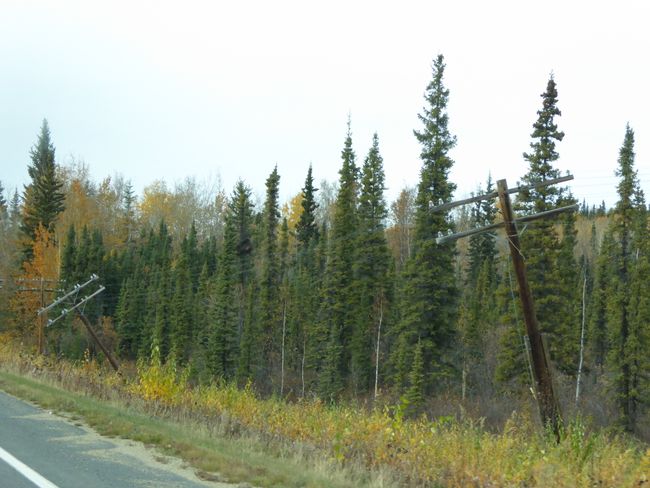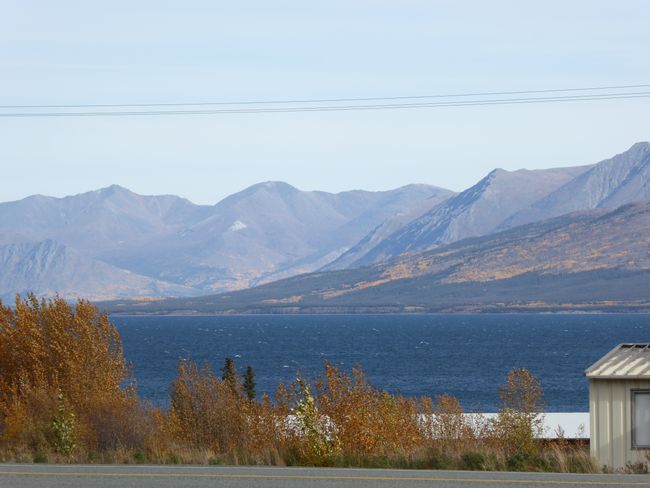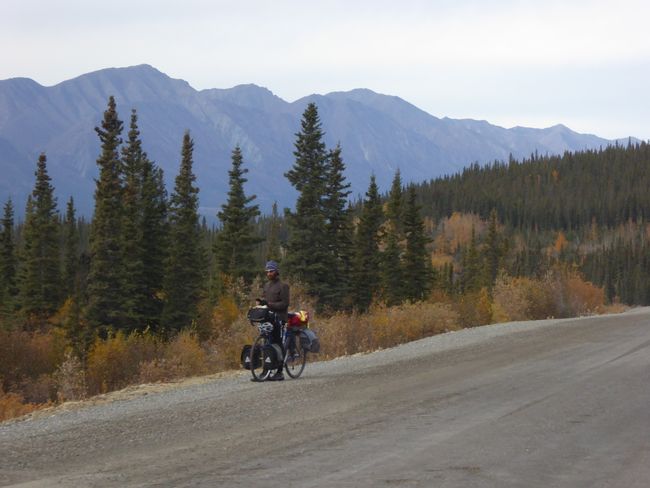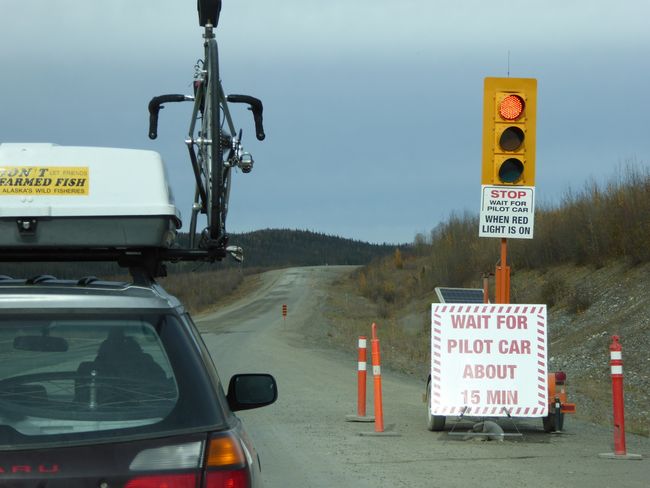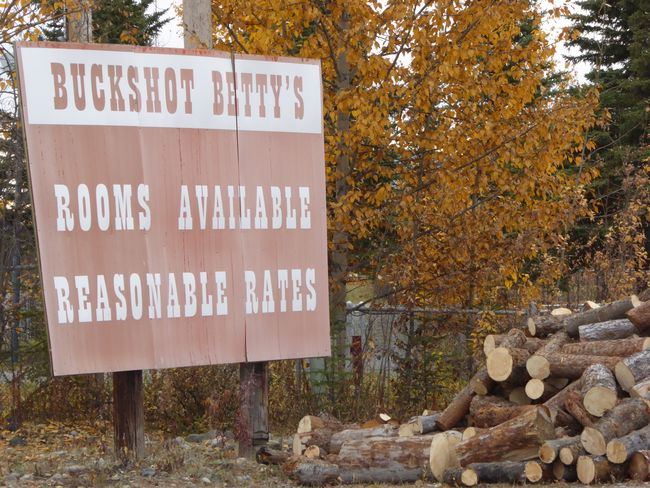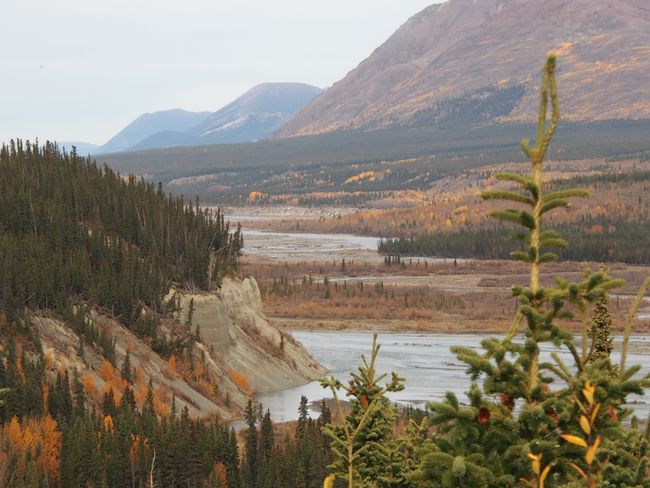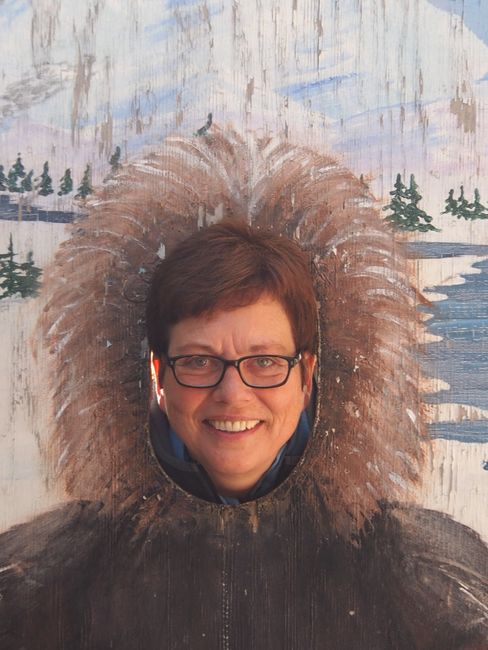
Alaska & Yukon im Herbst: 6000km mit Grizzlies, Goldgräbern und Polarlicht
vakantio.de/alaskaundyukonimherbst
500km on the Alaska Highway from Canada to Alaska
Gepubliseer: 12.08.2019
Teken in op Nuusbrief
September 17, 2014
Today we actually wanted to go to the Cozy Corner Cafe across the street, where there was a busy breakfast crowd yesterday while we were sitting in the unheated Glo's Grill. Today, however, the Cozy Corner Cafe is closed without any indication of whether it will ever reopen. Probably not until 2015... So we drive 100m to the Kluane Park Inn (K.P.I.), which is both a hotel and a restaurant and is run by a Chinese owner. The front of the hotel looks like it has been closed since 1960, with curtains hanging crookedly in front of windows that haven't been cleaned in ages. The entrance is on the side and you enter a decent but simple restaurant with plastic tablecloths. I don't really care about the breakfast menu. I can't stand this bacon and egg stuff anymore and order toast and coffee. The restaurant menu, on the other hand, is really impressive. Both Chinese dishes and meat, fish, and the obligatory burgers. It's not clear if everything is still available here, but we are offered the entire selection including sweet and sour chicken at 8:00 a.m.
The coffee is good and at $5 for the complete breakfast, it's really cheap. We refuel our car across the street. The gas pump stops at 76 CAD. The weather is not as clear as yesterday. Veil clouds obscure the sun and the views are not as spectacular. It's a good thing we're driving more today than sightseeing. We don't leave until after 11:00 a.m., driving along the Kluane Lake again and passing through Destruction Bay, where we actually find bananas at a gas station! I eat my two pieces for 3 CAD within 20 minutes.
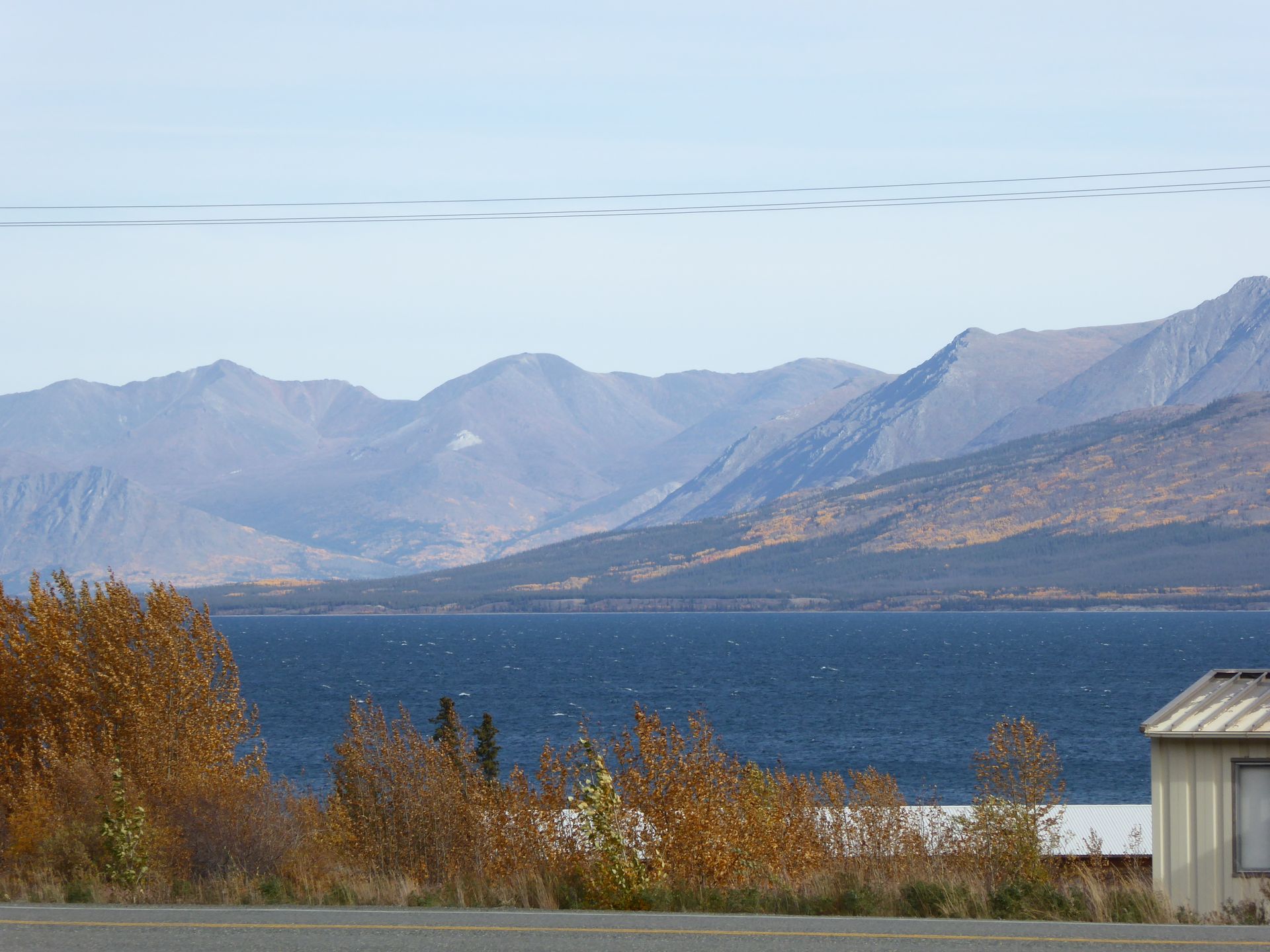
From now on, the Alaska Highway becomes quite annoying. Bumps after bumps, potholes and gravel sections alternate, causing the average speed to decrease and one should hold on to the steering wheel or seat. Often, the potholes are repaired, but now they are higher than the road level - we are thoroughly shaken, tossed around, and the car groans.
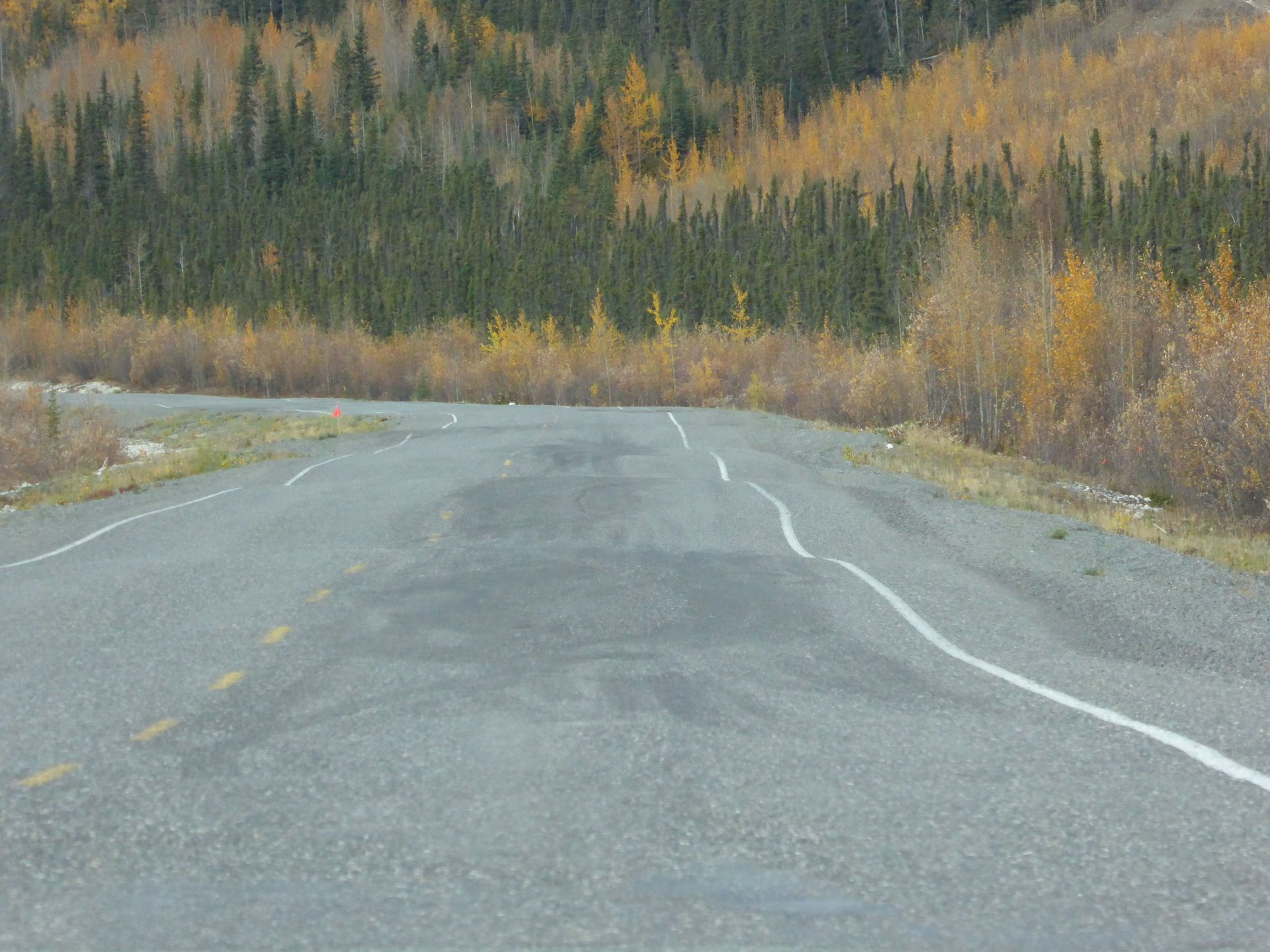

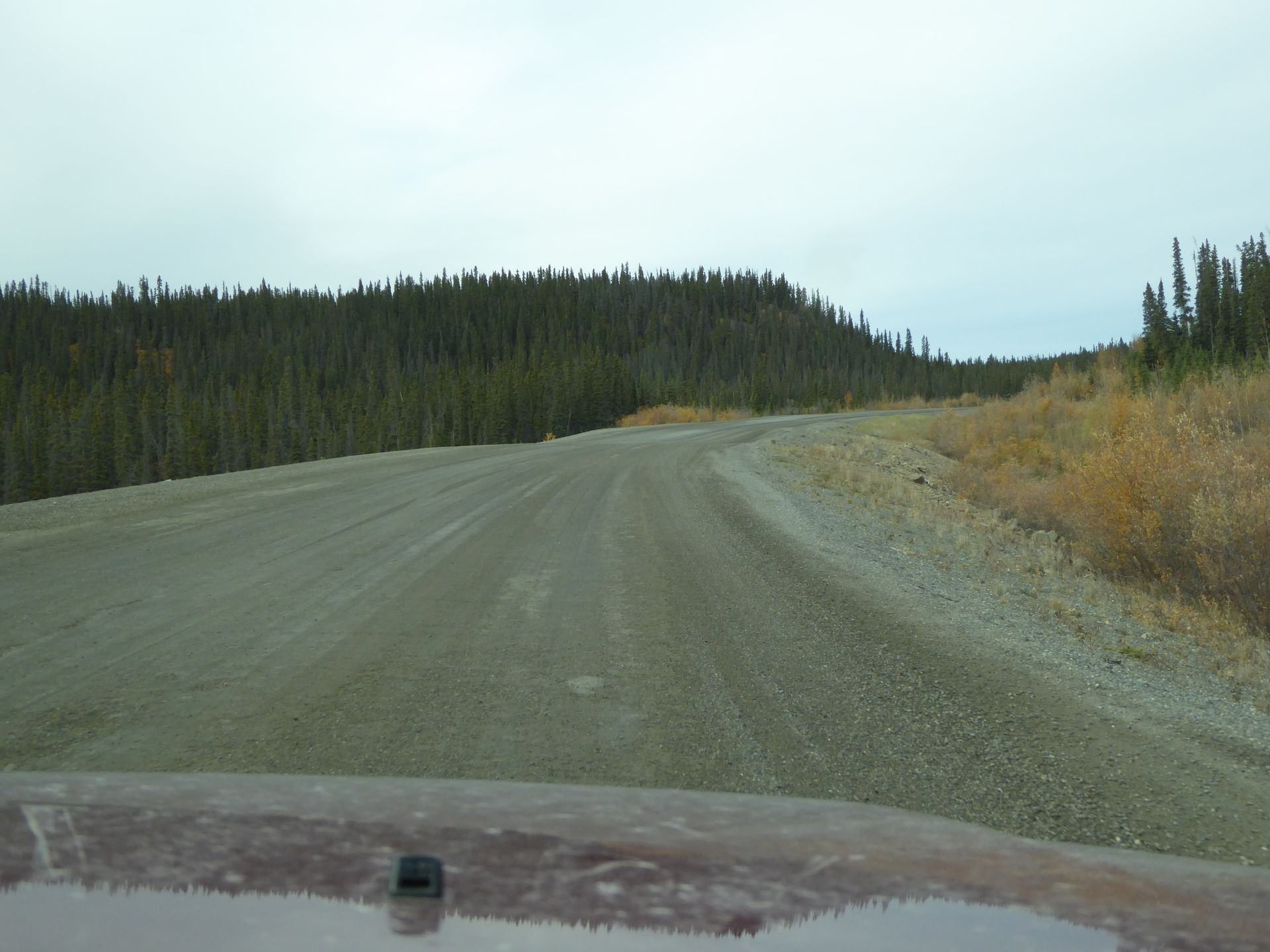
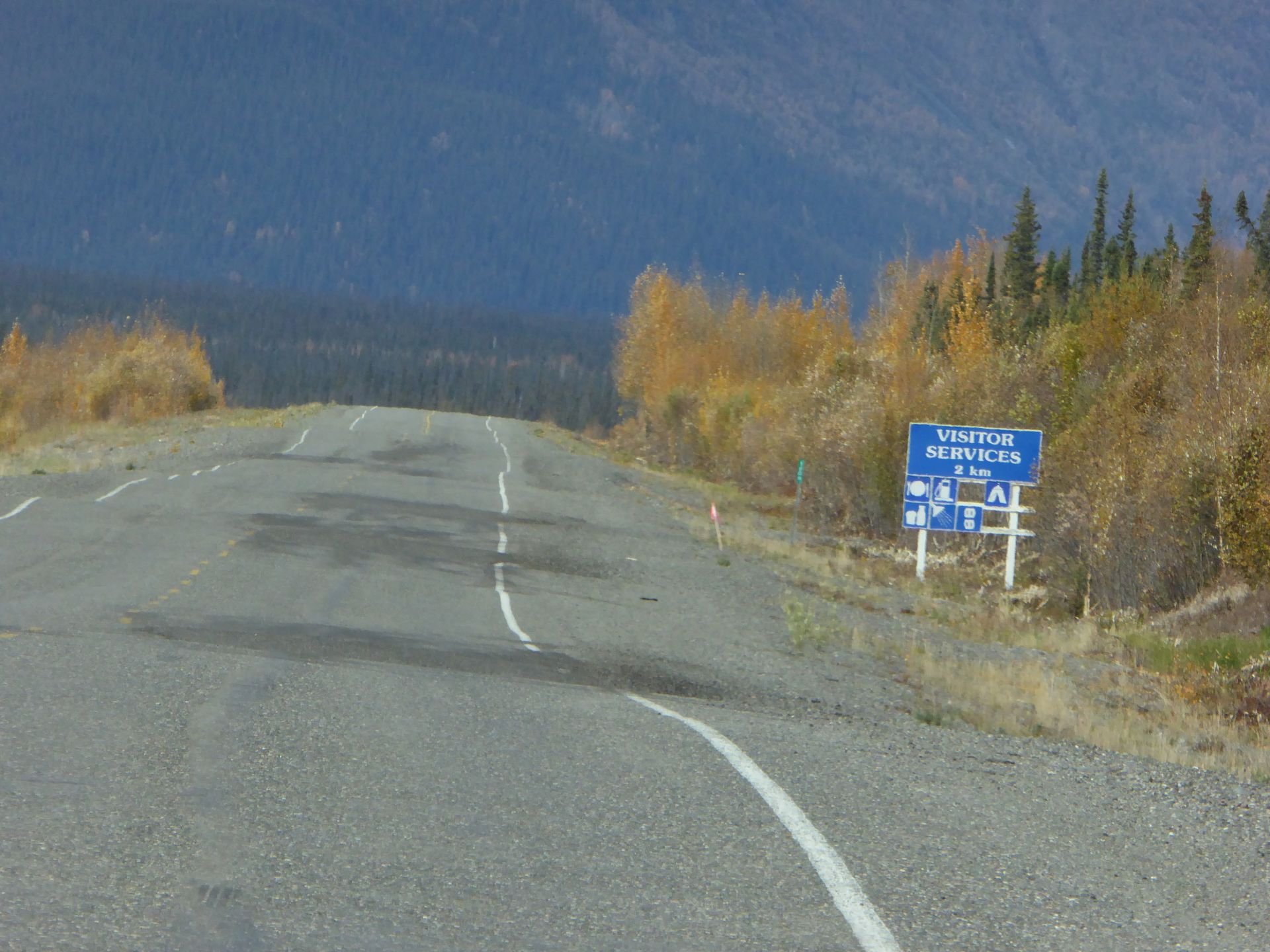

I'm glad once again that the Jeep has high clearance and we don't constantly hit the ground. We encounter a long construction zone at a high point of a pass. We wait for a pilot car for almost fifteen minutes. A guy behind us who drives this route every year says that the road quality is the worst he has ever experienced.
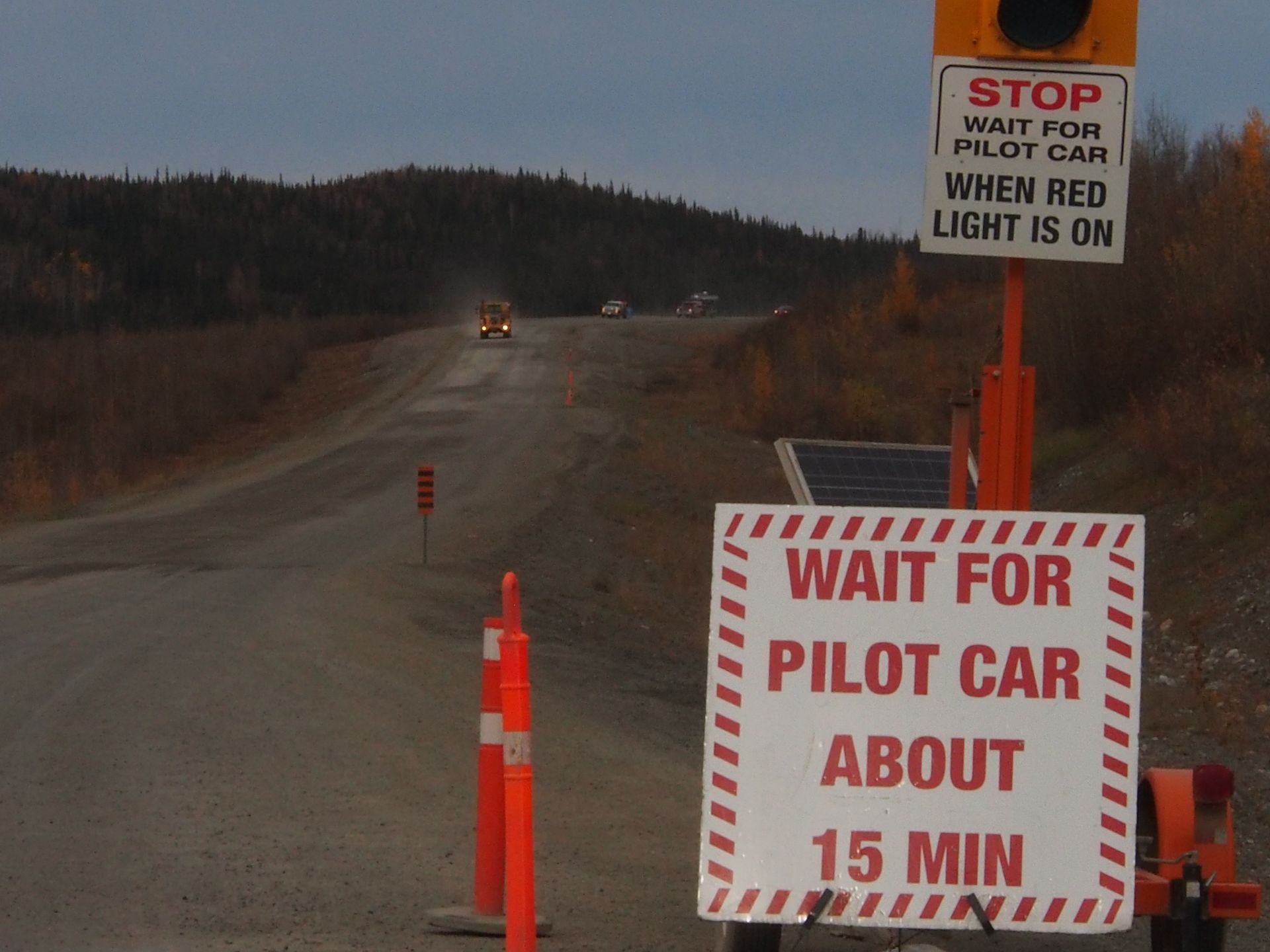
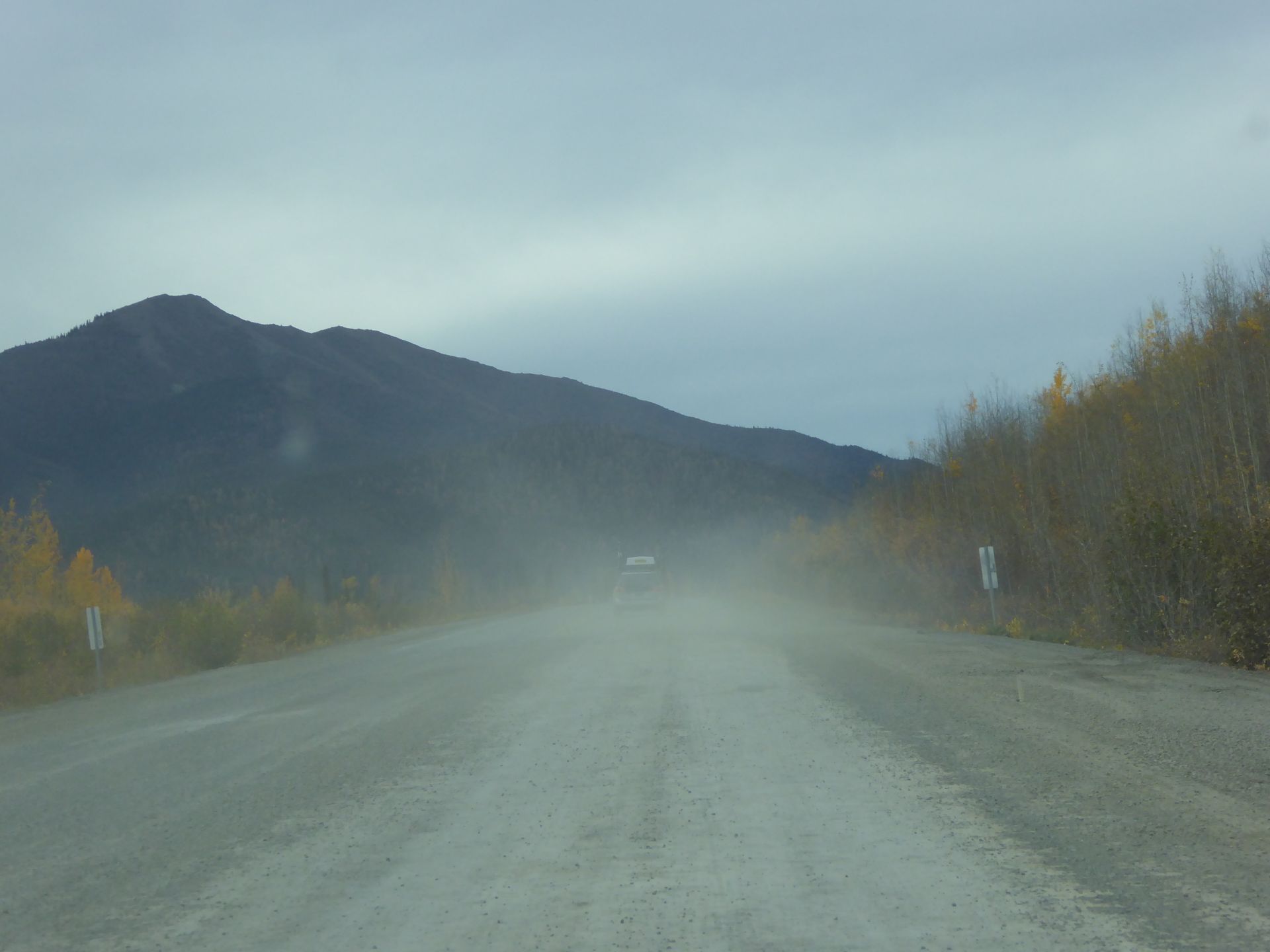
Finally, the pilot car arrives and we drive several kilometers on gravel and sand, kicking up thick dust clouds. The St. Elias Mountains lie beside us in the distance, with lots of snow on the peaks. Alongside the road, there are hundreds of wooden telegraph poles crookedly standing beside the road in the soft and frozen permafrost ground. I don't want to know how often the cables break because a pole simply sinks or collapses and the surrounding communities lose their telephone service. Although there are no visible settlements, the cables practically run alongside the road or sometimes even over a hill in the distance. They must be supplying someone.

At Beaver Creek, the border begins again. We have a coffee at "Buckshot Betty's" and take a 20-minute break from the bumpy ride.
Then we continue. Exiting Canada is no problem and the US border is another 30 km drive from the Canadian exit. Strange. We already think we know the questions, but now we are asked not only about weapons, but also about how much cash we have (I have about $20 US, G. has slightly more), whether everything in this car belongs to us, and whether we have pets with us. However, the guy already has our German passports in his hand and has already learned that we are tourists and can see from the entry stamp that we have been here for 2.5 weeks and has already asked when we are flying home. Did we bring our pets for a 3-week trip to the USA??? But then we are allowed to proceed.
The drive is dragging on and the jolting is getting really annoying, even if the road on the American side is slightly better than in Canada. The road surface is often very rough, making the driving noise very loud. You can notice the difference when you drive on a newer surface and can finally breathe a sigh of relief because your ears no longer ring.

We reach Tok at 5:30 p.m. This time we are staying next to "Fast Eddy's", the restaurant in Tok where we were last time. The attached motel is okay, the room is large and clean. My craving for something fresh is so great that I have a large salad as my main course and a small salad as a side dish.

We start a conversation with two hunters at the neighboring table. Throughout our route, we have seen plenty of jeeps, trucks with trailers, often refrigerated trucks, whose owners are out there in the backcountry hunting for moose, bears, caribou, mountain goats, or Dall sheep. Animals that we would like to see only through the camera are now being hunted here. One of the men says he has been hunting for 45 years but has only killed seven moose. Hunting is apparently a tiring "hobby". When they kill an animal, which usually happens somewhere off the road, they have to immediately butcher and cut it into transportable pieces right on the spot. Often, they leave the fur, skin, and antlers behind if it's mostly about the meat. It is also laborious to skin the animal before cutting it. So they hack the animal into pieces and transport the parts, including the fur remnants, to the car. Unimaginable for me to take pleasure in that or to engage in such a hobby! Hunting does not cost Alaska residents anything. They only need a hunting permit, which costs $25 per year. It entitles them to shoot, for example, 1 moose or 1 caribou or 2 Dall sheep, etc. However, the hunting season is limited and there are several parcels of land with different hunting seasons. So if you only want to hunt in one parcel, you may have to succeed within 10 days or move to another parcel with a different hunting season. Moose hunting is only possible for about 30 days a year, caribou are only hunted for 10 days, but bears can be hunted year-round.
With this bedtime story, I say goodbye to the room. Now the hotel has also put up signs for the next 2 nights, during which I had ordered both breakfast and dinner. Well, they have now closed their kitchen - until next year. We simply won't get anything to eat there anymore. So we are dependent on the General Store in Tok or a supermarket that I googled online, which is 70 miles before the hotel in a small town called Glenallen. But is it really (still) open? The hotel gave us two restaurants that are 15 and 22 miles away from there and apparently still serve food. However, one of them is already closed at 7:30 p.m. and is only a burger joint. Those are really great prospects.
I download my photos, write in my diary, and see online that the supposed super aurora that was noted there for days has practically been canceled. So I can sleep through the night. Tomorrow we will have a good breakfast. After a long time! With a positive attitude, I fall asleep.
Distance traveled: 480 km
Teken in op Nuusbrief
Antwoord
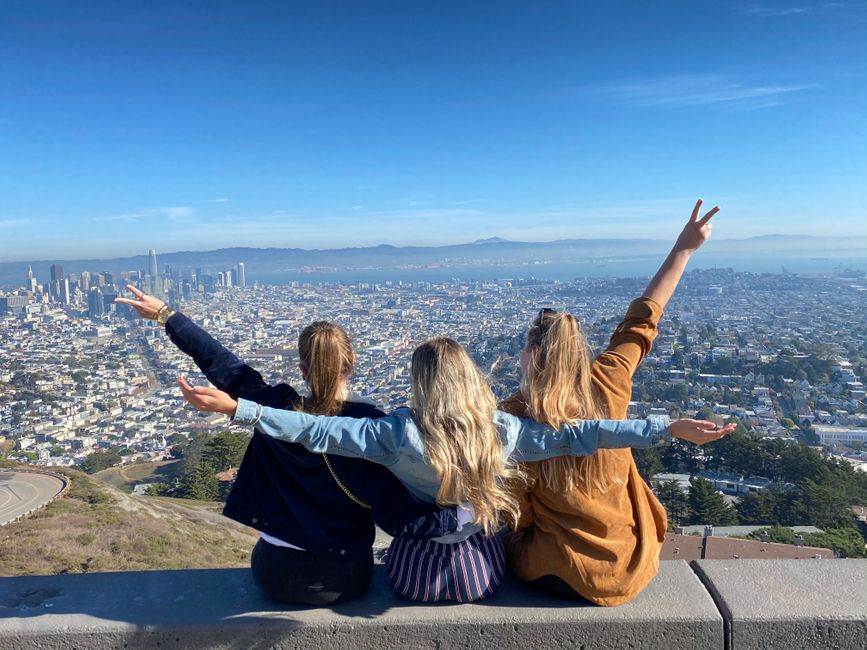
Reisverslae VSA

